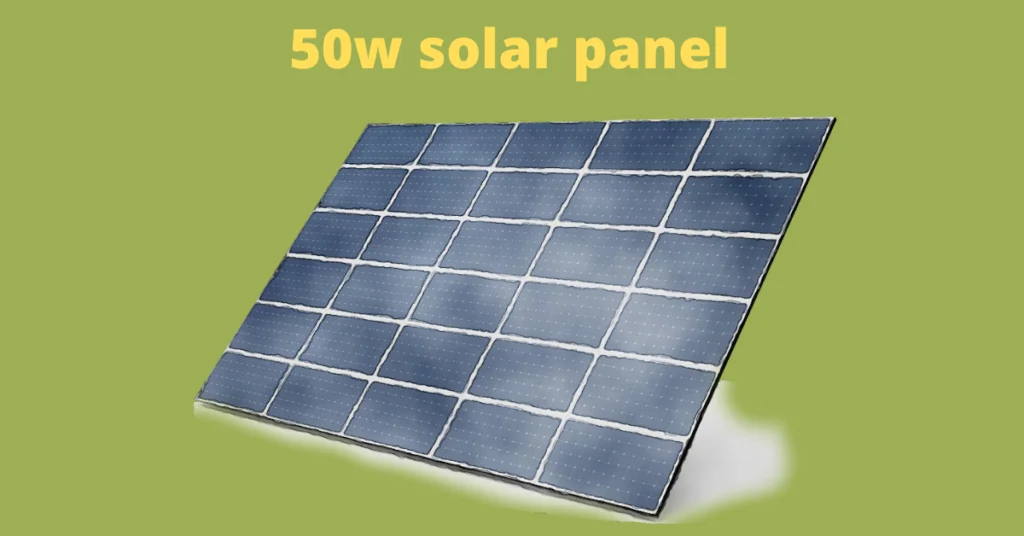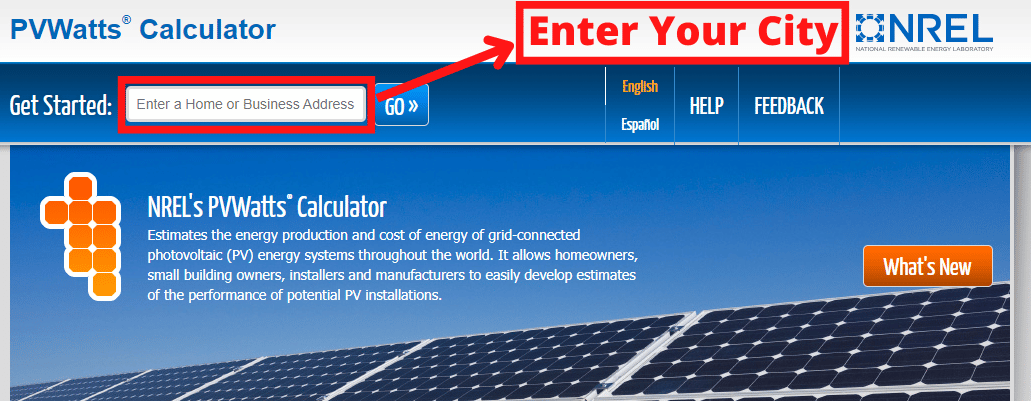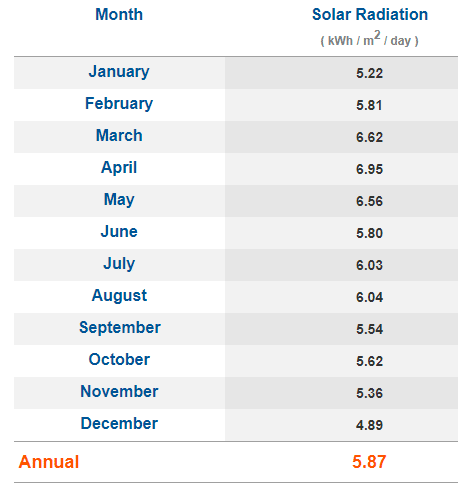
50 watt solar panel is a good way to start your solar power journey, This is going to be a complete guide about 50-watt solar panels, it's specs, what can it power, how much power they produce, and much more...
50-watt solar panel specifications
in specs normally there are a few things to consider, Max power output (Watts), Optimum operating voltage (Vmp), optimum operating current (Imp), operating temperature, and weight
To give you an idea, I'm going to share the Renogy 50-watt monocrystalline solar panel specification.
- Max power output (Watts): 50 watt
- Optimum operating voltage (Vmp): 18.6V
- Optimum operating current (Imp): 2.69A
- Operating temperature: (-40°C to +90°C) (-40°F to 194°F)
- Weight: 7.72 lb / 3.5 kg
Under ideal conditions (typically known as standard test conditions - STC) a 12v 50 watt solar panel will produce 50 watts of DC power output with 18.6V & 2.69A current.
Standard test conditions include 1000 watts per meter square (1kwh/m2) of sunlight intensity, no wind, & 25oC temperature.
But in real-world conditions, the power output will be different, which is what I'm going to discuss now
How Much Power Does a 50-watt Solar Panel Produce?
In the real world, on average, a 50-watt solar panel will produce about 200 watts of DC power output or 16 amps @ 12 volts per day. Considering 5 hours of peak sunlight.
There are different factors that determine the power output from the solar panels, like weather conditions, the angle of the solar panels towards the sun, and the temperature level in your area.
So in the real world, on average you’d receive about 80% of rated power output from your solar panels in peak sun hours.
Related Post: Solar Panel Output Calculator – Average Solar Panel Output?
You might be wondering, what are peak sun hours?
Peak Sun Hours

- 1 peak sun hours = 1kW/meter2 of sunlight intensity
As we have discussed earlier that the solar panels are rated their wattage number under laboratory conditions, which includes 1kW per meter2 of sunlight intensity
This is why we consider peak sun hours as a baseline when estimating the output of any solar panel system
Now let’s calculate how many peak sun hours your location receives or the total number of solar radiations per day
How To Calculate Peak Sun Hours
Use this Solar calculator to calculate the peak sun hours
Step 1: Enter Address
Enter your complete address or just a city name

Step 2: Click Results


Now here you’d be able to see the total number of peak sun hours per day from Jan - Dec.
The intensity of the sunlight will be different throughout the year. So to calculate the average output consider the annual average peak sun hours. (as 5.87 are in my city)
Example: Calculation
Let's just assume that your geographic location receives on average 5 hours of sunlight around the year. and the solar panels will produce their 80% of rated power output per peak sun hour which I have experienced so far using my solar panels.
80% of 50 will be 40 so on average a 50w solar panel can produce 40 watts of power per hour
To calculate the total power output
Average solar panel output x number of peak sunlight hours = Total per day output
40 x 5 = 200 watt-hours (Wh)
Keep in mind that this is the DC (Direct current) that we are talking about but most of our home appliances like TV, fridge, fans, etc use AC (alternating current)
DC vs AC Watts
Watch this video to know the difference between DC and AC power
To run the AC appliances from solar power you'll need an inverter. Which will convert the lower voltage DC into AC power.
For 50 watt solar panel, I would recommend a 500 watt inverter. which will allow you to run some large basic appliances (up to 450 watts)
But unfortunately, the inverters are not 100% efficient, most of them are about 90% efficient.
This means there will be a 10% solar power loss when converting DC into AC
For Example
I will take the above calculated value as an example (200Wh)
200*0.9 or 200 - 10% = 180 AC watt-hours
On average a 50-watt solar panel will generate about 180 AC watt-hours per day, considering 5 hours of peak sunlight and 90% efficient inverter
Related Post: Solar DC Watts To AC Watts Calculator & Formula
What can a 50-watt solar panel power
As we have calculated the amount of power we can get from a 50W solar panel in a day, let's discuss what you can run with this amount of power.
To give you a general idea, you have 200Wh of solar power stored in the batteries or portable solar power station.
You can run 100 watts of the appliances for 2 hours or 200 watts of appliances for 1 hour only.
list of appliances you can run with a 50 watt solar panel
- Light bulb 20w (10 hours)
- LED TV 50w (4 hours)
- Phone charger 6w (33 hours)
- Laptop charger 50w (4 hours)
- Electric blanket 200w ( 1 hour)
- Ceiling fan DC 75w (2.5 hours)
Can a 50W solar panel charge a battery?
a 12v 50W solar panel can charge any 12v battery. but I would recommend a 50Ah deep cycle battery lead-acid battery with 50 watt solar panel. Also, you’d need a 10A MPPT charge controller to safely charge your battery.
Do you really need a battery with 50 watt solar panels? the answer is Yes, so you can store the power produced by solar panels for later use But I would recommend a Jackery 300 portable solar generator for these solar panels
This is the best option to go with 50 watts of solar panels. simply plug your solar panels with this solar power station.
You won’t have to do the wiring stuff, (connecting the solar panel to the charge controller and charge controller to the battery, and then inverter with the battery)
What size charge controller for 50 watt solar panel? for a 50W solar panel, a 10A MPPT charge controller is recommended
Who Should Buy it?
If you’re on a budget and don’t have much money to spend on a large solar array a 50-watt solar system will be a good way to start.
You can run some of your very basic appliances with a 50-watt solar panel like charging phones, laptops, and LED light bulbs, and also it can be a great option to keep your basic appliances running during short trips and camping


